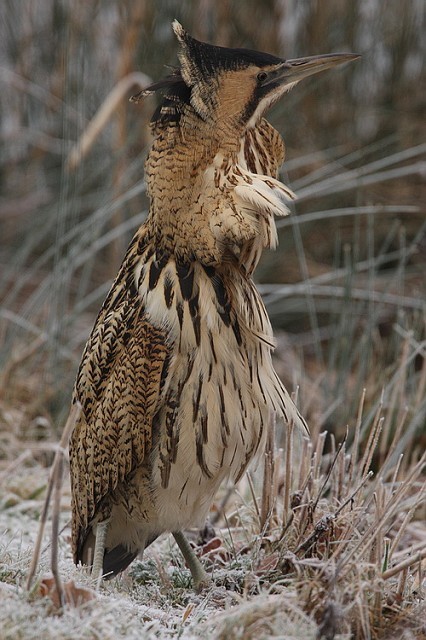Britain is currently undergoing its most prolonged period of cold weather for over a decade. In such circumstances, it is important to be especially careful in minimising any unnecessary disturbance of wild birds, especially the wildfowl, waders and other waterbirds that visit our coastal and inland wetlands in such internationally important numbers. In frozen conditions, birds not only need to expend more energy to maintain their body temperature, but food becomes much more difficult for them to obtain. In such cases, disturbance by people only adds further to the physical stress on birds, and such additional disturbance may result in increased mortality.

Pintail, Martin Mere WWT, Lancashire (Photo: Richard Fox)
Since 1983, an alerting system has been in place enabling statutory agencies and non-governmental organisations to work together to minimise the level of disturbance to waterbirds in frozen conditions. This includes mechanisms for the voluntary restraint (after seven days of frozen conditions) and then statutory suspension (after 14 days) of wildfowl shooting. Under the criteria by which the number of days are calculated (see www.jncc.gov.uk/page–2894 for details), 6th January 2009 represented day 8 in Scotland and day 7 in England & Wales.
In addition to shooting, however, it is also important to ensure that all other forms of disturbance at wetlands, including birdwatching, should be minimised. Existing surveys such as WeBS and the Bird Atlas should continue to be undertaken, but participants should avoid disturbing birds wherever possible.

Bittern, Slimbridge WWT, Gloucestershire (Photo: Dean Eades)
It would also be useful if active birdwatchers could send in any noteworthy observations from coastal sites and inland wetlands as part of the process of assessing the effects of the cold conditions on waterbirds. In particular, we would like to hear details of unusually high mortality, unusual behaviour (such as excessive "tameness"), unusually high (or low) numbers of certain species at particular sites, etc. These observations could be submitted as comments within BirdTrack or WeBS Online, or more detailed reports could be sent into BTO directly (webs@bto.org). Alternatively, the Joint Nature Conservation Committee has a standard form available at http://www.jncc.gov.uk/pdf/wildfowlingform_08_09.pdf.
Importantly, if you do find dead birds during this cold snap, please do check them for rings, as this can tell us a great deal about the birds involved. Details of ringed birds can be submitted online at www.ring.ac or to recoveries@bto.org.

